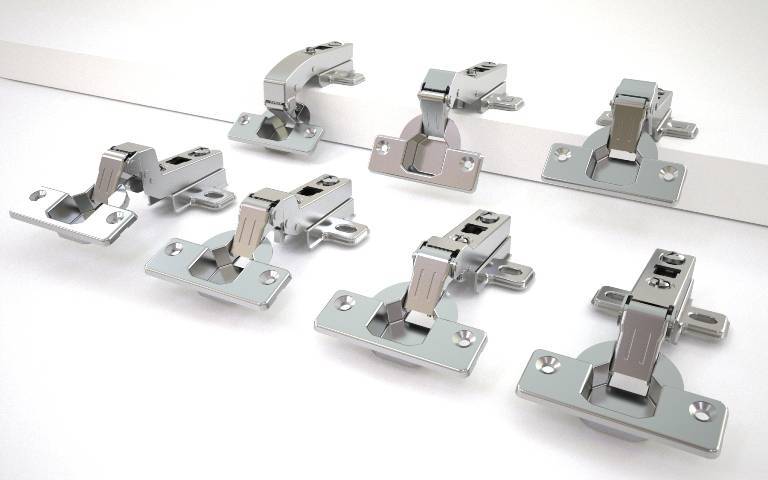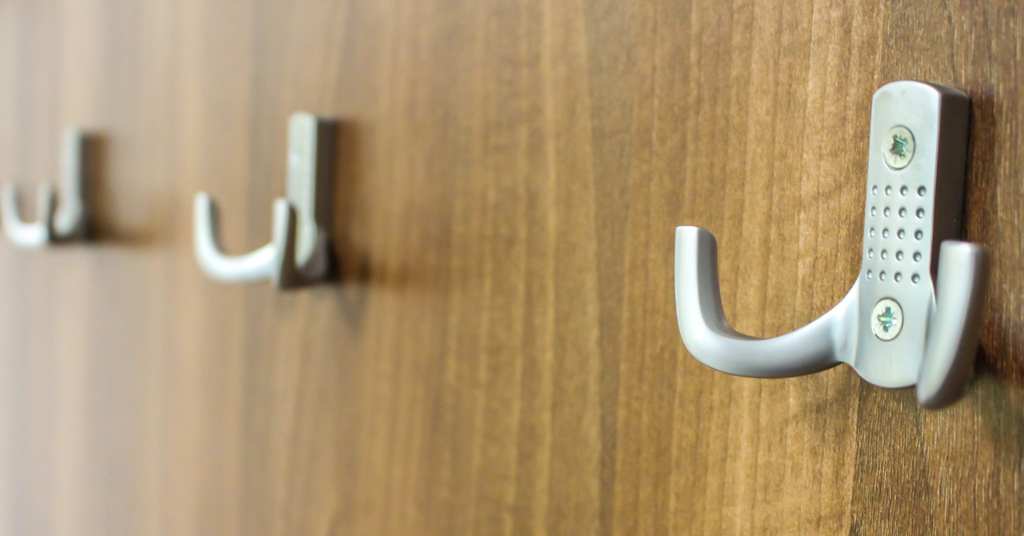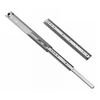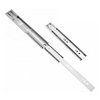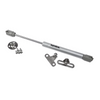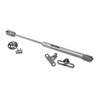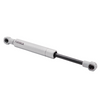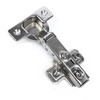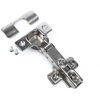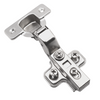Concealed cabinet hinges - types, features and application
TABLE OF CONTENTS:
- Selection of hinges for cabinets vs door position.
- Hinges with a wide opening angle.
- Hinges with a built-in soft-closing system.
- Mounting plate for hinge.
Correctly selected furniture hinges ensure safe and comfortable use of the furniture. Especially for large and heavy doors. The wide range allows matching the right hinge for any type of furniture. High-quality hinges guarantee comfort of movement. We advise on what to consider when choosing.
I. Selection of hinges for cabinets vs door position.
First of all, specify the type of material from which the furniture will be made and the thickness of the door. We distinguish hinges for wooden doors made of chipboard, with aluminum frame, wooden frame or for glass doors. Normal cup hinges are available with a standard 35 mm cup or 26 mm mini version. The hinges also differ in their opening angle. One of the criteria for dividing hinges is the type of door location. In this regard, we distinguish:
1. Full overlay hinge - colloquially called zero is one of the most commonly used furniture solutions. It is used when the cabinet door is located outside the furniture body. On the sides, only the free minimum spaces necessary for the correct opening and closing of the door remain.

2. Half overlay hinge, otherwise known as twin (referred to in technical naming 08) - we will use it when two adjacent wings share one body. Two doors are located outside the furniture body and rest on a common central partition.

3. Hinge for flush doors (colloquially called "15") - we will use when the cabinet door is located inside, i.e. between the side walls of the furniture body. The whole partition of the body is then visible, completely different than in the case of overlay doors.

4. Bi-fold corner hinge - we use it when the cabinets have two separate fronts. In this situation, we should use two hinges: one with a wide opening angle of 165° / 175°, and the other so-called. "complementary", which connects two fronts. Folding doors of this type are most often found in L-shaped corner furniture.

5. Corner door hinge - here we use 35° and 45° angle hinges for the front, which is attached to the body at the right angle.

6. Hinge for parallel doors - this is a hinge that, after closing the door, is placed parallel to the front and the cabinet's frame. This solution is most often used in kitchen furniture, where the use of so-called masking blend allows you to separate cabinets from the wall or adjacent opposite furniture, so that the fronts or cabinets can open freely.

II. Hinges with a wide opening angle.
When designing cabinets with internal or cargo drawers, it is worth using hinges with a negative (zero) step with a wide opening angle. They will allow you to pull out drawers freely without having to install spacers. Hinges with a wide opening angle are also models for use in corner cabinets. An example would be the Furnica 165° Soft-Close Hinge which guarantees safe use of furniture even for small children due to the small gaps between moving elements that do not exceed 7 mm.
III. Hinges with a built-in soft-closing system.
Increasingly, manufacturers are introducing additional functions that significantly increase the comfort not only of use, but also the assembly and disassembly of hinges. The Furnica company introduced the clip-on function, i.e. quick disassembly without the need for tools. According to other manufacturers, this system is sometimes called "clip-top" or clip. Another feature distinguishing selected models is the function of quiet and delicate closing, which brakes the door closed with a flourish. From now on, the door will no longer hit the cabinet body.

IV. Mounting plate for hinge.
To install the hinge you will need a mounting plate (guide), which is available in different heights known as distance D. For overlay doors, a larger distance D reduces their overlap. A larger distance D for inset doors increases the gap between the body and the door. Currently, manufacturers not only care about the high comfort of using hinges, but also about their aesthetic appearance, which can be additionally enriched with accessories such as end caps.
- Furniture accessories blog
- 22 Aug, 2019
- Posted By: Kamil Siedzielnik
Recent Posts
-
-
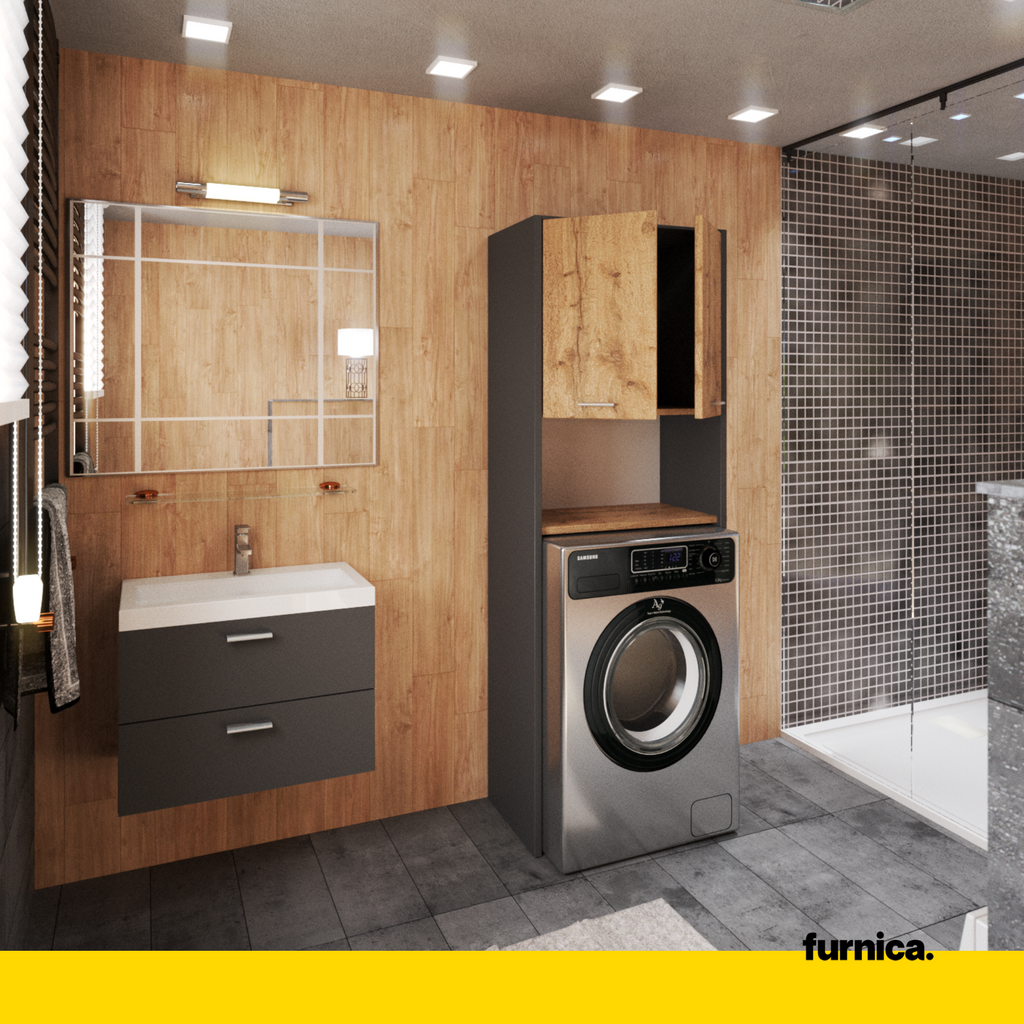
-
What should I consider before buying bathroom cabinet?
08 February, 2023
-
-
-
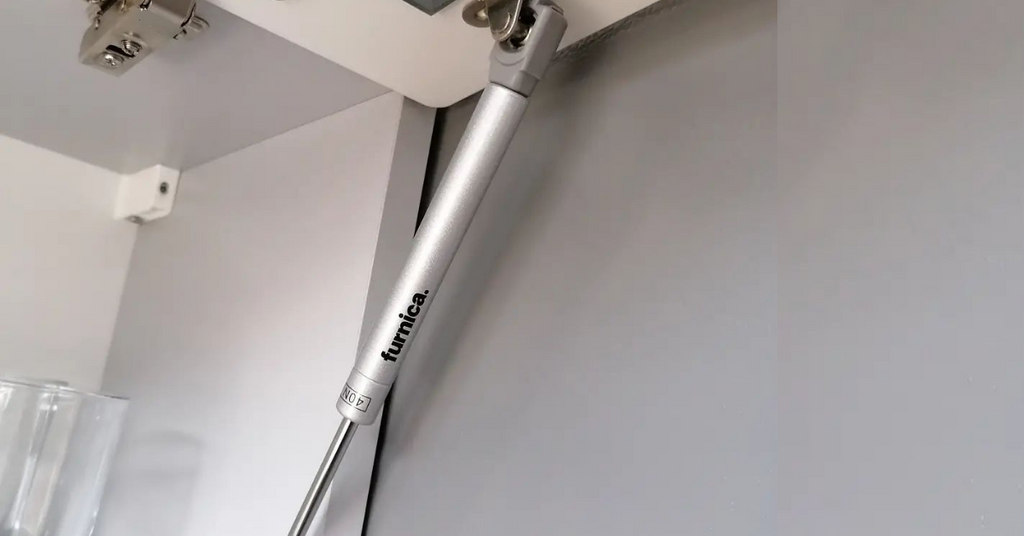
-
How to install gas struts?
09 November, 2021
-
-
-
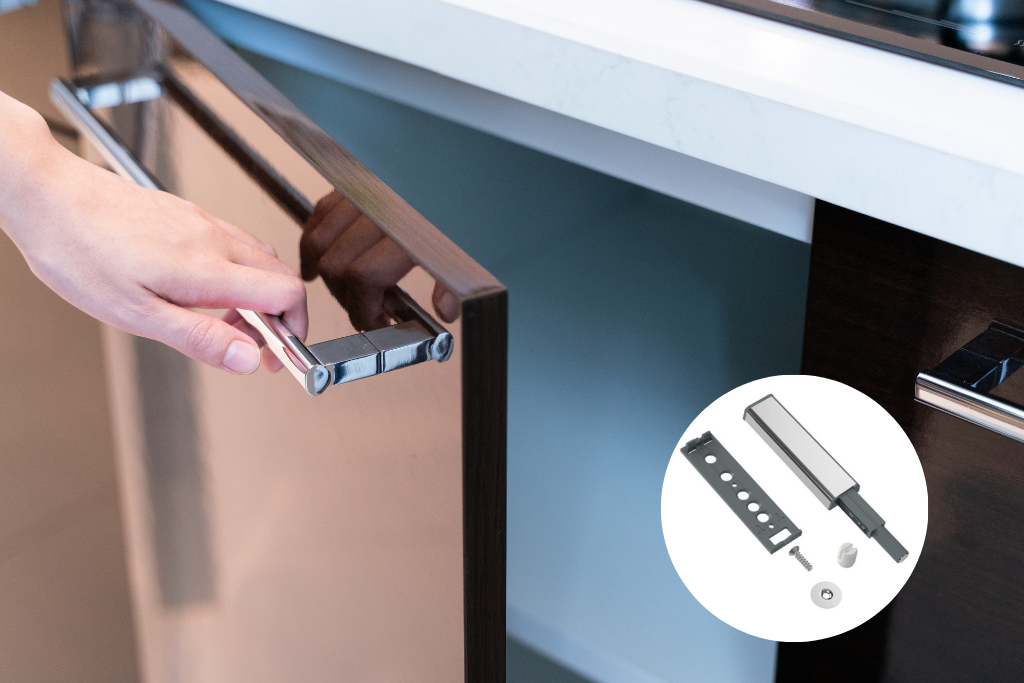
-
How do push-to-open latches work?
06 October, 2021
-
-
-
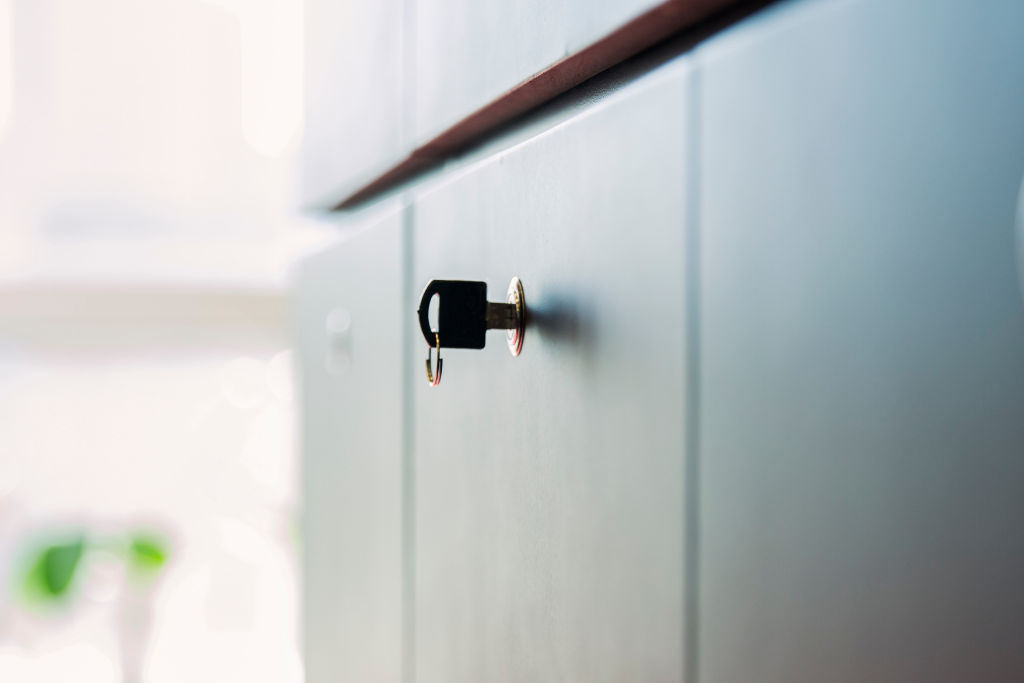
-
How do I fit a furniture lock to a cabinet?
06 October, 2021
-
-
-
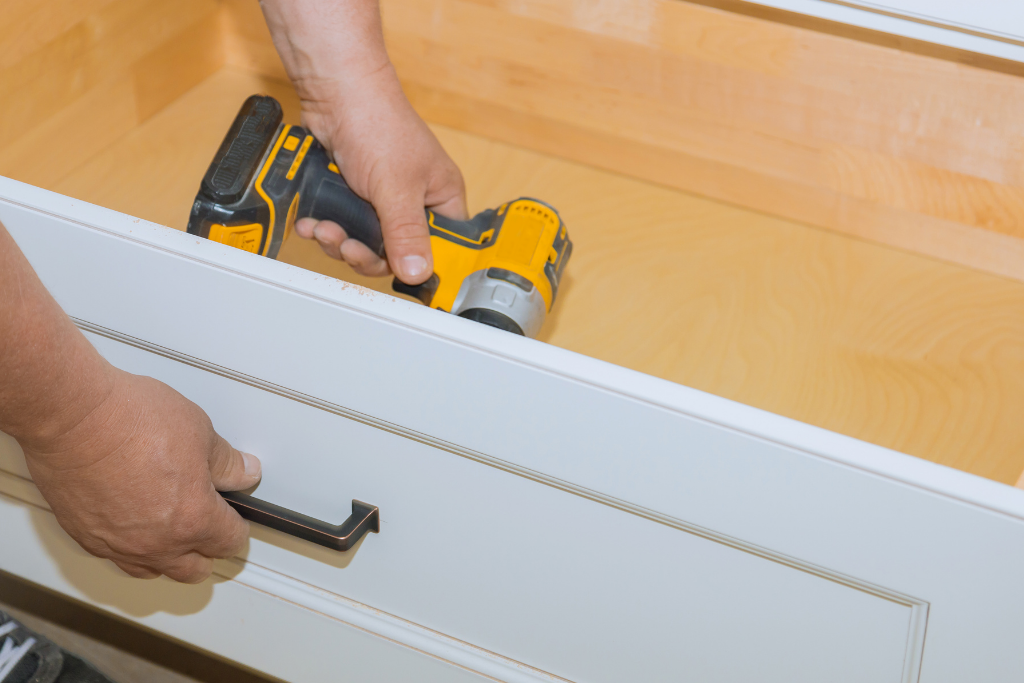
-
How to install cabinet handles?
06 October, 2021
-
-
-

-
How to install cable grommets?
08 July, 2021
-
-
-
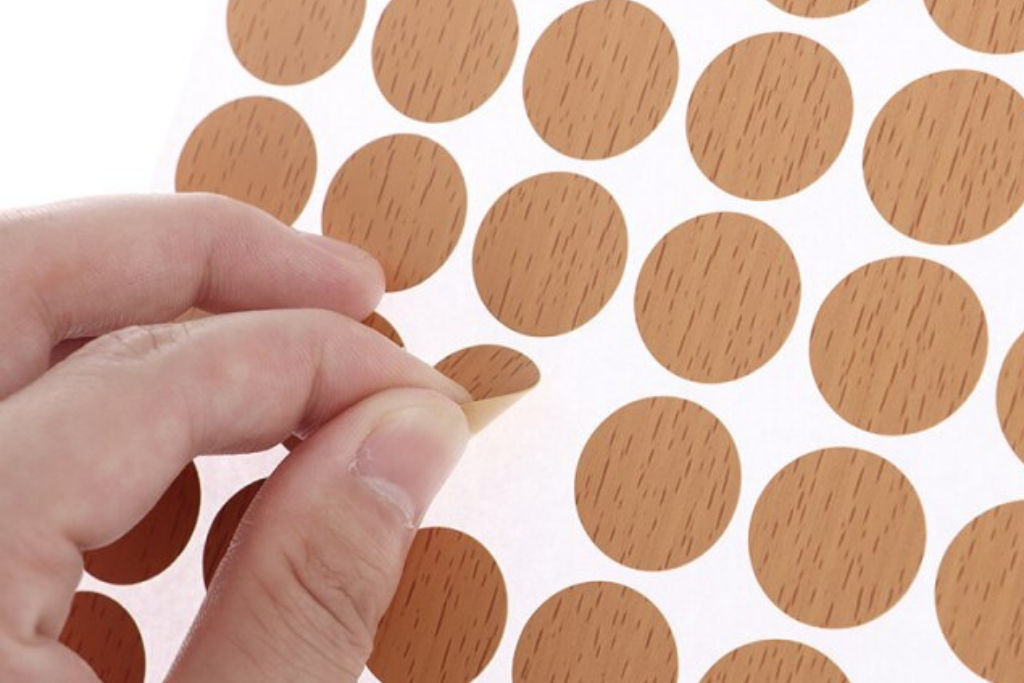
-
How to hide screws in wood?
08 July, 2021
-
-
-
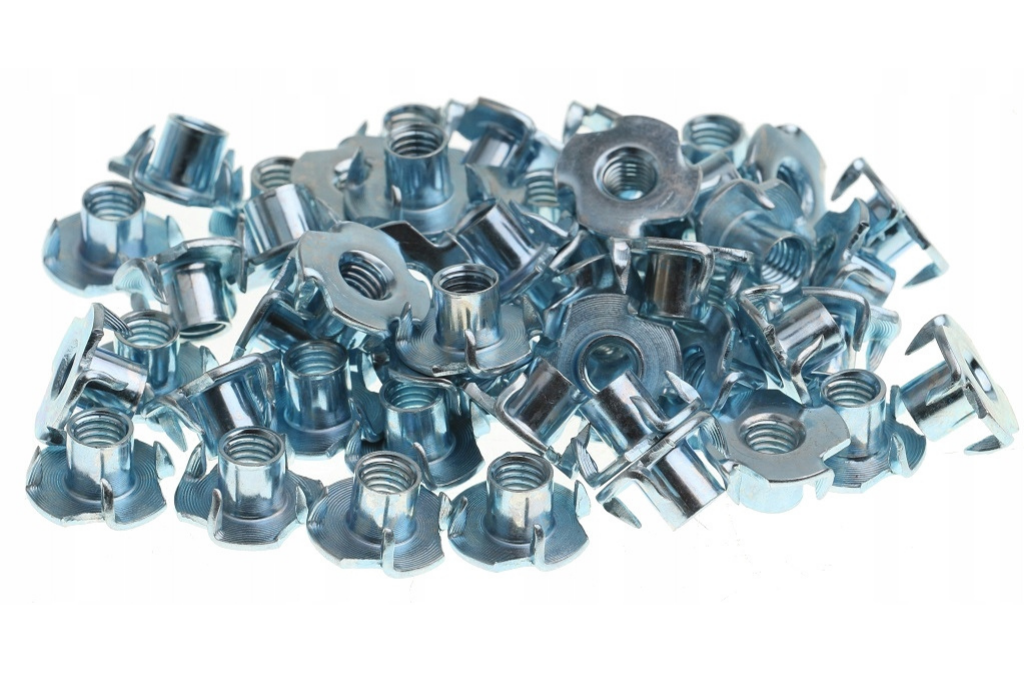
-
How to install the claw nuts commonly called T-nuts?
08 July, 2021
-
-
-
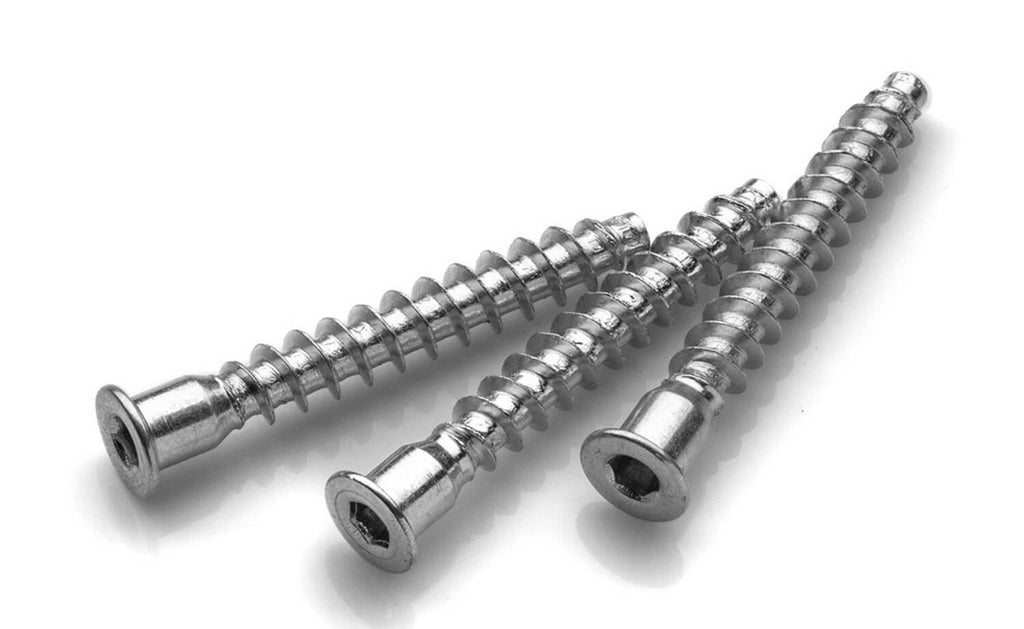
-
What are confirmats?
20 May, 2021
-
- 100cm Chest of Drawers
- 110cm Chest of Drawers
- 120cm Chest of Drawers
- 128mm cabinet handles
- 140cm Chest of Drawers
- 150cm Chest of Drawers
- 150cm Wardrobe
- 160mm cabinet handles
- 16mm wood screws
- 180cm TV Unit
- 192mm cabinet handles
- 2 Door Wardrobe
- 2 Drawer Dresser
- 2 Tier Shoe Cabinet
- 2.5mm wood screws
- 200cm Chest of Drawers
- 200cm Wardrobe
- 220cm Chest of Drawers
- 256mm cabinet handles
- 3 Door Wardrobe
- 3 Tier Shoe Cabinet
- 30cm Deep Chest of Drawers
- 320mm cabinet handles
- 32mm cabinet handles
- 4 Chair Dining Set
- 4 Chair Dining Table
- 4 Door Wardrobe
- 4 Drawer Dresser
- 4+2 Chest of Drawers
- 416mm cabinet handles
- 43 Inch TV Stand
- 480mm cabinet handles
- 50cm Chest of Drawers
- 55 Inch TV Stand
- 6 Door Wardrobe
- 6 Drawer Dresser
- 60cm Chest of Drawers
- 60cm Wide Wardrobe
- 65 Inch TV Stand
- 65cm Chest of Drawers
- 70 Inch TV Stand
- 70cm Chest of Drawers
- 75 Inch TV Stand
- 75cm Chest of Drawers
- 8 Drawer Dresser
- 80 Inch TV Stand
- 80cm Chest of Drawers
- 85 Inch TV Stand
- 90cm Chest of Drawers
- 96mm cabinet handles
- Accent Chairs
- Accessories
- Adjustable furniture legs
- Adjusting cupboard hinges
- Air vent grill
- ALBI System
- Aluminum Cabinet Handles
- Aluminum robe hook
- Anthracite Bathroom Cabinet
- Anthracite Chest of Drawers
- Anti-dust Brushes
- Anti-Slip Mat
- Baby Furniture Sets
- Back Panel Wedges
- Ball bearing slides
- Base units
- Bathroom Cabinet 30cm Wide
- Bathroom Cabinet 50cm wide
- Bathroom cabinet hinges
- Bathroom Cabinet Sets
- Bathroom Cabinet With Shelf
- Bathroom Cabinets
- Bathroom Dresser
- Bathroom Furniture
- Bathroom Wall Cabinet
- Bedroom Chest of Drawers
- Bedroom Dresser
- Bedroom Furniture Sets
- Bedroom Wardrobe
- Bedside Chest of Drawers
- Bedside Tables/Nightstands
- Beige Wardrobe
- Best screws for hard wood
- Big Chest of Drawers
- Big Shoe Cabinet
- Biscuits & Dowels
- Black Accent Chair
- Black and White Chest of Drawers
- Black and White Dresser
- Black Bathroom Cabinet
- Black Cabinet Handles
- Black Chairs
- Black Desk With Drawers
- Black Dining Chairs
- Black Dresser
- Black felt pads for furniture
- Black Floating TV Stand
- Black Friday Chest of Drawers
- Black furniture legs
- Black Gloss Chest of Drawers
- Black Gloss Wardrobe
- Black Kitchen Set
- Black Living Room Furniture Sets
- Black Shoe Cabinet
- Black TV Cabinet
- Black TV Stand
- Black TV Unit
- Black Wardrobe
- Black Wardrobe With Mirror
- Black Wide Chest of Drawers
- Black Wood Chest of Drawers
- Black wood screws
- Blue Accent Chair
- Blue Dresser
- Bookcase Dresser
- Bottom Horizontal Profiles
- Brackets & Fittings
- Breakfast Bar Chairs
- Brown Chest of Drawers
- Brown Felt pads for furniture
- Brown Wardrobe
- Brushed Steel Cabinet Handles
- Bumper push latch
- Cabinet brackets
- Cabinet corner braces
- Cabinet door bumpers
- Cabinet hanging brackets
- Cabinet Hinges
- Cabinet hinges 110°
- Cabinet hinges 135°
- Cabinet hinges 155°
- Cabinet hinges 165°
- Cabinet hinges 30°
- Cabinet hinges 45°
- Cabinet hinges 90°
- Cabinet hinges concealed
- Cabinet hinges Soft-Close
- Cabinet legs
- Cabinet locks
- Cabinet shelf brackets
- Cable Grommet
- Cable grommet aluminum
- Cable grommet black
- Cable grommet brown
- Cable grommet brushed steel
- Cable grommet chrome
- Cable grommet grey
- Cable grommet metal
- Cable grommet plastic
- Cable grommet rectangular
- Cable grommet round
- Cable grommet satin
- Cable grommet silver
- Cable grommet square
- Cable grommet white
- Cable hole cover
- Cam dowel
- Cam dowel 24mm
- Cam dowel 28mm
- Cam dowel 34mm
- Cam dowel 8mm
- Cam lock nut
- Central locking for drawer
- Chairs
- Cheap Bedroom Furniture Sets
- Cheap Chest of Drawers
- Cheap Computer Desk
- Cheap Computer Desk
- Cheap Dressers
- Cheap Kitchen Set
- Cheap TV Stand
- Cheap Wardrobes
- Cheapest wood screws
- Chest of 10 Drawers
- Chest of 10 Drawers (6+4)
- Chest of 12 Drawers (8+4)
- Chest of 12 Drawers (8+4) White
- Chest of 12 Drawers (8+4) White Gloss
- Chest of 14 Drawers (4+6+4)
- Chest of 14 Drawers (4+6+4) Anthracite
- Chest of 14 Drawers (4+6+4) Sonoma Oak
- Chest of 2 Drawers
- Chest of 3 Drawers
- Chest of 3 Drawers Sonoma Oak
- Chest of 3 Drawers White
- Chest of 3 Drawers White Gloss
- Chest of 4 Drawers
- Chest of 4 Drawers Sonoma Oak
- Chest of 4 Drawers White
- Chest of 4 Drawers White Gloss
- Chest of 5 Drawers
- Chest of 6 Drawers
- Chest of 6 Drawers Black
- Chest of 6 Drawers Sonoma Oak
- Chest of 6 Drawers Sonoma Oak
- Chest of 6 Drawers White
- Chest of 6 Drawers White Gloss
- Chest of 6 Drawers White Gloss
- Chest of 8 Drawers
- Chest of 8 Drawers Sonoma Oak
- Chest of 8 Drawers White
- Chest of 8 Drawers White Gloss
- Chest of Bedroom Drawers
- Chest of Black Drawers
- Chest of Blue Drawers
- Chest of Dark Wood Drawers
- Chest of Deep Drawers
- Chest of Drawers
- Chest of Drawers for Clothes
- Chest of Extra Large Drawers
- Chest of Extra Tall Drawers
- Chest of Extra Wide Drawers
- Chest of Gloss White Drawers
- Chest of Gray Drawers
- Chest of Grey Drawers
- Chest of Large Drawers
- Chest of Light Oak Drawers
- Chest of Low Drawers
- Chest of Mini Drawers
- Chest of Modern Drawers
- Chest of Narrow Drawers
- Chest of Oak Drawers
- Chest of Pine Drawers
- Chest of Shallow Drawers
- Chest of Slim Drawers
- Chest of Small Drawers
- Chest of White Drawers
- Chest of Wide Drawers
- Chest of Wooden Drawers
- Child's Wardrobe
- Childrens Wardrobe
- Chrome cabinet handles
- Chrome cabinet hinges
- Chrome furniture legs
- Chrome robe hook
- Chrome wood screws
- Closed Shoe Cabinet
- Closet
- Coffee Tables
- Collections Wardrobe width - 1200mm
- Collections Wardrobe width - 2400mm
- Compact Computer Table
- Compact Shoe Cabinet
- Computer Desk
- Computer Desk 80cm Wide
- Computer Desk 90cm Wide
- Computer Desk White
- Computer Desk White Gloss
- Computer Desk With Doors
- Concrete Chest of Drawers
- Confirmat screws
- Connector & supports
- Corner Bathroom Cabinet
- Corner cabinet hinges
- Corner cupboard storage
- Corner Dresser
- Corner Shoe Cabinet
- Corner TV Cabinets
- Corner TV Stand
- Corner TV Unit
- Corner Wardrobe
- Cream Accent Chair
- Cream Chest of Drawers
- Cream Dining Chairs
- Cream Shoe Cabinet
- Cupboard door dampers
- Cupboard door hinges
- Cupboard handles
- Cupboard locks
- Cupboard pull out storage
- Cupboards
- Custom made sliding door
- Dark Grey Chest of Drawers
- Dark Grey Shoe Cabinet
- Dark Oak Wardrobe
- Dark Shoe Cabinet
- Dark Wood Dresser
- Dark Wood Wardrobe
- Deep Computer Desk
- Designer Chest of Drawers
- Desk cable grommet 20mm
- Desk cable grommet 60mm
- Desk cable grommet 80mm
- Desk Chair Without Wheels
- Dining Chairs
- Dining Room Chest of Drawers
- Dining Room Dresser
- Dining Room Furniture Sets
- Dining Table Chairs
- Dish rack cabinet
- Door bumper
- Double Bottom Tracks
- Double Chest of Drawers
- Double Dresser
- Double robe hook
- Double Top Tracks
- Double Wardrobe
- Drawer Equipment
- Drawer inserts
- Drawer locks
- Drawer runners
- Drawer runners 1000mm
- Drawer runners 1100mm
- Drawer runners 1200mm
- Drawer runners 1300mm
- Drawer runners 1400mm
- Drawer runners 17mm height
- Drawer runners 250mm
- Drawer runners 270mm
- Drawer runners 27mm height
- Drawer runners 300mm
- Drawer runners 30mm height
- Drawer runners 350mm
- Drawer runners 35mm height
- Drawer runners 400mm
- Drawer runners 450mm
- Drawer runners 45mm height
- Drawer runners 500mm
- Drawer runners 53mm height
- Drawer runners 550mm
- Drawer runners 600mm
- Drawer runners 650mm
- Drawer runners 700mm
- Drawer runners 750mm
- Drawer runners 800mm
- Drawer runners 850mm
- Drawer runners 900mm
- Drawer runners 950mm
- Drawer Slides
- Drawer slides auto-lock
- Drawer slides full extension
- Drawer slides Push-to-Open
- Drawer slides Soft-Close
- Drawer system Soft-close
- Drawer Systems
- Dresser with Deep Drawers
- Easy close cabinet hinges
- Easy On Cabinet Hinges
- Eco Leather Chairs
- European cabinet hinges
- Extra Large Chest of Drawers
- Extra Large Computer Desk
- Extra Large Deep Chest of Drawers
- Extra Tall Chest of Drawers
- Fabric Chairs
- Felt pads for furniture
- Floating Media Console
- Floating shelf support
- Floating TV Shelf
- Floating TV Stand
- Floating TV Unit
- Frame Fixing Screws
- Freestanding Bathroom Cabinet
- Freestanding Wardrobe
- Full Kitchen Set
- Full overlay cabinet hinges
- Furniture
- Furniture cam connectors
- Furniture castors
- Furniture Chest of Drawers
- Furniture damper
- Furniture handles
- Furniture knobs
- Furniture LED accessories
- Furniture LED lamps with USB
- Furniture LED tape light
- Furniture Legs
- Furniture lighting LED
- Furniture locks
- Furniture Sets
- Furniture wheels
- GABRIEL 10
- GABRIEL 12
- GABRIEL 14
- GABRIEL 4
- GABRIEL 6
- GABRIEL 8
- Gas Strut Black
- Gas Strut Silver
- Gas Strut White
- Gas Struts
- Glass and Plate Holder
- Glass cabinet locks
- Glass Gaskets/Seals
- Glass shelf clips
- Glass shelf supports
- Gold Cabinet Handles
- Gray Accent Chair
- Gray Shoe Cabinet
- Gray Wardrobe
- Gray Wood Dresser
- Green Accent Chair
- Green Dining Chairs
- Grey Accent Chair
- Grey and White Chest of Drawers
- Grey Bedroom Furniture Sets
- Grey Chest Dresser
- Grey Computer Desk
- Grey Dining Chairs
- Grey Dresser
- Grey felt pads for furniture
- Grey Gloss Chest of Drawers
- Grey High Gloss Chest of Drawers
- Grey Living Room Furniture Sets
- Grey Shoe Cabinet
- Grey TV Cabinet
- Grey Velvet Chair
- Grey Wardrobe
- Grey Wood Chest of Drawers
- Grey Wood Dresser
- H-Bar Connectors
- Hallway Dresser
- Handle Profiles
- Hanging rail
- Heavy duty cabinet hinges
- Heavy Duty Concealed Hinges
- Heavy duty drawer runners
- Heavy duty wheels for furniture
- High Gloss
- High Gloss Chest of Drawers
- High Gloss Furniture
- High Gloss Living Room Furniture Sets
- High Gloss Shoe Cabinet
- Home Office Furniture Sets
- Hydraulic supports
- Industrial Chest of Drawers
- Industrial Dining Chairs
- Industrial TV Unit
- Industrial Wardrobe
- Inexpensive Dressers
- Inset cabinet hinges
- Invisible cabinet hinges
- Jointing biscuits
- Kitchen Base Units
- Kitchen Base Units
- Kitchen Base Units - Width: 100 cm
- Kitchen Base Units - Width: 15 cm
- Kitchen Base Units - Width: 20 cm
- Kitchen Base Units - Width: 30 cm
- Kitchen Base Units - Width: 40 cm
- Kitchen Base Units - Width: 45 cm
- Kitchen Base Units - Width: 60 cm
- Kitchen Base Units - Width: 80 cm
- Kitchen cabinet handles
- Kitchen cabinet hinges
- Kitchen Chairs
- Kitchen corner baskets
- Kitchen Corner Units
- Kitchen Doors
- Kitchen Doors - Cabinet width 60cm
- Kitchen Doors - Dortmund
- Kitchen Doors - Rugby
- Kitchen Doors H:1060mm
- Kitchen Doors H:1286mm
- Kitchen Doors H:570mm
- Kitchen Doors H:596mm
- Kitchen Doors H:600mm
- Kitchen Doors H:713mm
- Kitchen Doors H:856mm
- Kitchen Doors H:913mm
- Kitchen furniture
- Kitchen Larder Units
- Kitchen Set - 6 Units
- Kitchen Set - 8 Units
- Kitchen Set - 8 units
- Kitchen Sets
- Kitchen sinks
- Kitchen Units
- Kitchen Wall Units
- Lancelot Oak Chest of Drawers
- Large Bathroom Cabinet
- Large Black Chest of Drawers
- Large Corner TV Unit
- Large Dresser
- Large Shoe Cabinet
- Large Tall Chest of Drawers
- Large TV Unit
- Large Wardrobe
- Large White Chest of Drawers
- Latches
- Laundry baskets
- Lazy susan cabinet hinges
- Leather handles
- LeMans corner - Kessebohmer
- LeMans I Arena Classic
- LeMans II Arena Classic
- LeMans Kessebohmer
- Lift Systems
- LIFT-O-MAT
- Light Wood TV Stand
- Little Dresser
- Living Room Chairs
- Living Room Chest of Drawers
- Living Room Furniture Sets
- Living Room Wardrobe
- Long Bathroom Cabinet
- Long Chest of Drawers
- Long Chest of Drawers Bedroom
- Long Dresser
- Long Dresser Drawers
- Long TV Stand
- Lounge Chair
- Lounge Furniture Sets
- Low Shoe Cabinet
- Luxury Dining Chairs
- Made to Measure Sliding Wardrobe Doors
- Magnetic cabinet catch
- Magnetic cupboard catch
- Magnetic door catch
- Mahogany Wardrobe
- Mailbox lock
- Marble TV Stand
- Matt Black Bathroom Cabinet
- Matt Surface
- Mechanical supports
- Media Unit
- Media Unit Wall
- Medicine Cabinet
- Metal drawer slides
- Metal furniture legs
- Metal Shelf Support
- Metal table leg square
- Mixed Felt pads for furniture
- Modern Accent Chairs
- Modern Armoire
- Modern Bedroom Furniture Sets
- Modern Dining Chairs
- Modern Dresser
- Modern Dresser For Bedroom
- Modern Home Office Desk
- Modern Kitchen Set
- Modern Living Room Furniture Sets
- Modern Shoe Cabinet
- Modern TV Stand
- Modern Wardrobe
- Narrow Computer Desk
- Narrow Dresser
- Narrow Shoe Cabinet
- Narrow Wardrobe
- Narrow White Dresser
- Natural Wood Chest of Drawers
- Navy Dining Chairs
- Nightstand Dresser
- Nursery Dresser
- Nursery Furniture Sets
- Oak Bathroom Cabinet
- Oak Bedroom Furniture Sets
- Oak Computer Desk With Drawers
- Oak Corner TV Unit
- Oak Dining Chairs
- Oak Shoe Cabinet
- Oak TV Cabinet
- Oak TV Stand
- Oak TV Unit
- Oak Wardrobe
- Office Chairs
- Office Chest of Drawers
- Office Computer Desk
- Orange Accent Chair
- Overlay cabinet hinges
- Packaging
- Painted Wardrobes
- Partial overlay cabinet hinges
- Pelican shelf support bracket
- Pine Dresser
- Pine Shoe Cabinet
- Pine Wardrobe
- Pink Accent Chair
- Pink Chair
- Plastic Chairs
- Portable Wardrobe
- Power Stations
- Pozidrive wood screws
- Profile handle
- Promotion 500mm Silver and White
- Pull Down Wardrobe Rail
- Pull handles
- Pull out clothes rail
- Pull Out Computer Desk
- Pull Out Shelves
- Pull out spice rack
- Pull Out storage baskets
- Pull out wardrobe rail
- Pull-out kitchen waste bins
- Pull-out waste bin 300mm
- Pull-out waste bin 400mm
- Pull-out waste bin 450mm
- Pull-out waste bin 500mm
- Pull-out waste bin 600mm
- Push to Open latch
- Rectangular Felt pads for furniture
- Recycling bins for kitchen
- Robe hooks
- Roller slides
- Rotating Shoe Cabinet
- Round Felt pads for furniture
- RTV Cabinets
- Rustic TV Stand
- Safety Foil
- Satin Cabinet Handles
- Satin furniture legs
- Satin robe hook
- Scandinavian Style Furniture
- Screw cover caps
- Screw cover caps 14mm
- Screw cover caps 18mm
- Screw cover caps black
- Screw cover caps brown
- Screw cover caps grey
- Screw cover caps oak
- Screw cover caps white
- Screw cover caps wood
- Screw fasteners
- Self closing cabinet hinges
- Shallow Bathroom Cabinet
- Shallow Chest of Drawers
- Shallow Shoe Cabinet
- Shelf brackets
- Shoe cabinet
- Shoe Cabinet 50cm Wide
- Shoe Cabinet 60cm Wide
- Shoe cabinet anthracite
- Shoe Cabinet For Large Shoes
- Shoe Cabinet Hallway
- Shoe cabinet sonoma oak
- Shoe cabinet white
- Shoe Cabinet With Doors
- Shoe Cabinet With Seat
- Short Chest of Drawers
- Short Wardrobe
- Sideboard Chest of Drawers
- Sideboard Dresser
- Silver Cabinet Handles
- Silver cabinet hinges
- Single Door Wardrobe
- Single robe hook
- Single Wardrobe
- Sliding Door Manufacturing Tools
- Sliding Wardrobe Doors
- Slim Computer Desk
- Slim Dresser
- Slim Shoe Cabinet
- Slim Shoe Cabinet For Hallway
- Slim TV Stand
- Slim Wardrobe
- Slimline Shoe Cabinet
- Slow close cabinet hinges
- Small Accent Chair
- Small Bathroom Cabinet Black
- Small Dresser
- Small furniture legs
- Small recycling bins for kitchen
- Small shelf brackets
- Small Shoe Cabinet
- Small TV Stand
- Small Wardrobe
- Small Wardrobe With Drawers
- Small wood screws UK
- Small Wooden Chest of Drawers
- Solid Oak TV Unit
- Solid Wood Dresser
- Solid Wood Wardrobe
- Sonoma Oak Chest of Drawers
- Square felt pads for furniture
- Square furniture legs
- Stainless steel waste bin
- Storage Cabinets
- T-nuts
- Table Chair Set
- Tall Bathroom Cabinets
- Tall Dresser
- Tall Dresser Chest
- Tall Shoe Cabinet
- Tall Slim Dresser
- Tall Slim Shoe Cabinet
- Tall Wardrobe
- Tall White Chest of Drawers
- Teal Dining Chairs
- Television Cabinets
- Television Tables
- test
- Test Products
- Thin Chest of Drawers
- Thin Dresser
- Thin Shoe Cabinet
- Thin Wardrobe
- Threaded insert
- Toddler Chair
- Toilet Mirror Cabinet
- Top Horizontal Profiles
- Triple robe hook
- Triple Wardrobe
- tst
- TV Bench
- TV Cabinet With Doors
- TV cabinets
- TV Console Cabinet
- TV Entertainment Center
- TV Entertainment Units
- TV Stand For 55 Inch TV
- TV Stand for 65 Inch TV
- TV Stand For 70 Inch TV
- TV Stand For 75 Inch TV
- TV Stand For 85 Inch TV
- TV Stand with Bracket
- TV Stand With Storage
- TV Table
- TV Table Stand
- TV Unit With Storage
- TV Wall Unit
- Ultra Thin Shoe Cabinet
- Under Shelf Storage
- Undermount drawer runners
- Velour Chairs
- Velvet Chair
- Velvet Dining Chairs
- Very Tall Chest of Drawers
- Wall mounted clothes rack
- Wall mounted clothes rail
- Wall Mounted TV Cabinet
- Wall Mounted TV Stand
- Wall Shoe Cabinet
- Wall units
- Wall units
- Wall units
- Wall-Mounted Shoe Cabinet
- Walnut Dresser
- Walnut Shoe Cabinet
- Walnut TV Unit
- Walnut Wardrobe
- Wardrobe 100cm Wide
- Wardrobe 120cm Wide
- Wardrobe 140cm Wide
- Wardrobe 90cm Wide
- Wardrobe Fittings
- Wardrobe handles
- Wardrobe shelf brackets
- Wardrobe width - 1600mm
- Wardrobe width - 1800mm
- Wardrobe With Drawers
- Wardrobe With Shelves
- Wardrobe Without Doors
- Wardrobes
- Waste Bins
- Wenge Chest of Drawers
- Wheels / Top Guides
- White Armoire
- White Armoire With Drawers
- White Bathroom Cabinet
- White Bedroom Furniture Sets
- White Cabinet Handles
- White Chest Drawers
- White Computer Desk
- White Desk Gaming
- White Dining Chairs
- White Dresser
- White Dresser Drawers
- White Felt pads for furniture
- White Floating TV Stand
- White furniture legs
- White Furniture Sets
- White Gloss Bathroom Cabinet
- White Gloss Shoe Cabinet
- White Gloss TV Unit
- White Gloss Wardrobes
- White Kitchen Set
- White Matt Chest of Drawers
- White Nursery Furniture Sets
- White Office Chair
- White Shoe Cabinet
- White Small Dresser
- White TV Cabinet
- White TV Stand
- White TV Unit
- White Wardrobe
- White Wardrobe With Drawers
- Wood screws
- Wood screws 3.5mm
- Wood screws 3mm
- Wood screws 40mm
- Wood screws 4mm
- Wood screws PH1
- Wood screws PH2
- Wood screws PZ1
- Wood screws PZ2
- Wood TV Stand
- Wooden Computer Table
- Wooden Shoe Cabinet
- Wooden Wardrobe
- Work Desks
- Worktop connector
- Worktop Fittings
- Worktop Frames
- Wotan Oak Chest of Drawers
- Yellow Dining Chairs
- Zinc wood screws
Recent Posts
-
-

-
What should I consider before buying bathroom cabinet?
08 February, 2023
-
-
-

-
How to install gas struts?
09 November, 2021
-
-
-

-
How do push-to-open latches work?
06 October, 2021
-
-
-

-
How do I fit a furniture lock to a cabinet?
06 October, 2021
-
-
-

-
How to install cabinet handles?
06 October, 2021
-
-
-

-
How to install cable grommets?
08 July, 2021
-
-
-

-
How to hide screws in wood?
08 July, 2021
-
-
-

-
How to install the claw nuts commonly called T-nuts?
08 July, 2021
-
-
-

-
What are confirmats?
20 May, 2021
-
- 100cm Chest of Drawers
- 110cm Chest of Drawers
- 120cm Chest of Drawers
- 128mm cabinet handles
- 140cm Chest of Drawers
- 150cm Chest of Drawers
- 150cm Wardrobe
- 160mm cabinet handles
- 16mm wood screws
- 180cm TV Unit
- 192mm cabinet handles
- 2 Door Wardrobe
- 2 Drawer Dresser
- 2 Tier Shoe Cabinet
- 2.5mm wood screws
- 200cm Chest of Drawers
- 200cm Wardrobe
- 220cm Chest of Drawers
- 256mm cabinet handles
- 3 Door Wardrobe
- 3 Tier Shoe Cabinet
- 30cm Deep Chest of Drawers
- 320mm cabinet handles
- 32mm cabinet handles
- 4 Chair Dining Set
- 4 Chair Dining Table
- 4 Door Wardrobe
- 4 Drawer Dresser
- 4+2 Chest of Drawers
- 416mm cabinet handles
- 43 Inch TV Stand
- 480mm cabinet handles
- 50cm Chest of Drawers
- 55 Inch TV Stand
- 6 Door Wardrobe
- 6 Drawer Dresser
- 60cm Chest of Drawers
- 60cm Wide Wardrobe
- 65 Inch TV Stand
- 65cm Chest of Drawers
- 70 Inch TV Stand
- 70cm Chest of Drawers
- 75 Inch TV Stand
- 75cm Chest of Drawers
- 8 Drawer Dresser
- 80 Inch TV Stand
- 80cm Chest of Drawers
- 85 Inch TV Stand
- 90cm Chest of Drawers
- 96mm cabinet handles
- Accent Chairs
- Accessories
- Adjustable furniture legs
- Adjusting cupboard hinges
- Air vent grill
- ALBI System
- Aluminum Cabinet Handles
- Aluminum robe hook
- Anthracite Bathroom Cabinet
- Anthracite Chest of Drawers
- Anti-dust Brushes
- Anti-Slip Mat
- Baby Furniture Sets
- Back Panel Wedges
- Ball bearing slides
- Base units
- Bathroom Cabinet 30cm Wide
- Bathroom Cabinet 50cm wide
- Bathroom cabinet hinges
- Bathroom Cabinet Sets
- Bathroom Cabinet With Shelf
- Bathroom Cabinets
- Bathroom Dresser
- Bathroom Furniture
- Bathroom Wall Cabinet
- Bedroom Chest of Drawers
- Bedroom Dresser
- Bedroom Furniture Sets
- Bedroom Wardrobe
- Bedside Chest of Drawers
- Bedside Tables/Nightstands
- Beige Wardrobe
- Best screws for hard wood
- Big Chest of Drawers
- Big Shoe Cabinet
- Biscuits & Dowels
- Black Accent Chair
- Black and White Chest of Drawers
- Black and White Dresser
- Black Bathroom Cabinet
- Black Cabinet Handles
- Black Chairs
- Black Desk With Drawers
- Black Dining Chairs
- Black Dresser
- Black felt pads for furniture
- Black Floating TV Stand
- Black Friday Chest of Drawers
- Black furniture legs
- Black Gloss Chest of Drawers
- Black Gloss Wardrobe
- Black Kitchen Set
- Black Living Room Furniture Sets
- Black Shoe Cabinet
- Black TV Cabinet
- Black TV Stand
- Black TV Unit
- Black Wardrobe
- Black Wardrobe With Mirror
- Black Wide Chest of Drawers
- Black Wood Chest of Drawers
- Black wood screws
- Blue Accent Chair
- Blue Dresser
- Bookcase Dresser
- Bottom Horizontal Profiles
- Brackets & Fittings
- Breakfast Bar Chairs
- Brown Chest of Drawers
- Brown Felt pads for furniture
- Brown Wardrobe
- Brushed Steel Cabinet Handles
- Bumper push latch
- Cabinet brackets
- Cabinet corner braces
- Cabinet door bumpers
- Cabinet hanging brackets
- Cabinet Hinges
- Cabinet hinges 110°
- Cabinet hinges 135°
- Cabinet hinges 155°
- Cabinet hinges 165°
- Cabinet hinges 30°
- Cabinet hinges 45°
- Cabinet hinges 90°
- Cabinet hinges concealed
- Cabinet hinges Soft-Close
- Cabinet legs
- Cabinet locks
- Cabinet shelf brackets
- Cable Grommet
- Cable grommet aluminum
- Cable grommet black
- Cable grommet brown
- Cable grommet brushed steel
- Cable grommet chrome
- Cable grommet grey
- Cable grommet metal
- Cable grommet plastic
- Cable grommet rectangular
- Cable grommet round
- Cable grommet satin
- Cable grommet silver
- Cable grommet square
- Cable grommet white
- Cable hole cover
- Cam dowel
- Cam dowel 24mm
- Cam dowel 28mm
- Cam dowel 34mm
- Cam dowel 8mm
- Cam lock nut
- Central locking for drawer
- Chairs
- Cheap Bedroom Furniture Sets
- Cheap Chest of Drawers
- Cheap Computer Desk
- Cheap Computer Desk
- Cheap Dressers
- Cheap Kitchen Set
- Cheap TV Stand
- Cheap Wardrobes
- Cheapest wood screws
- Chest of 10 Drawers
- Chest of 10 Drawers (6+4)
- Chest of 12 Drawers (8+4)
- Chest of 12 Drawers (8+4) White
- Chest of 12 Drawers (8+4) White Gloss
- Chest of 14 Drawers (4+6+4)
- Chest of 14 Drawers (4+6+4) Anthracite
- Chest of 14 Drawers (4+6+4) Sonoma Oak
- Chest of 2 Drawers
- Chest of 3 Drawers
- Chest of 3 Drawers Sonoma Oak
- Chest of 3 Drawers White
- Chest of 3 Drawers White Gloss
- Chest of 4 Drawers
- Chest of 4 Drawers Sonoma Oak
- Chest of 4 Drawers White
- Chest of 4 Drawers White Gloss
- Chest of 5 Drawers
- Chest of 6 Drawers
- Chest of 6 Drawers Black
- Chest of 6 Drawers Sonoma Oak
- Chest of 6 Drawers Sonoma Oak
- Chest of 6 Drawers White
- Chest of 6 Drawers White Gloss
- Chest of 6 Drawers White Gloss
- Chest of 8 Drawers
- Chest of 8 Drawers Sonoma Oak
- Chest of 8 Drawers White
- Chest of 8 Drawers White Gloss
- Chest of Bedroom Drawers
- Chest of Black Drawers
- Chest of Blue Drawers
- Chest of Dark Wood Drawers
- Chest of Deep Drawers
- Chest of Drawers
- Chest of Drawers for Clothes
- Chest of Extra Large Drawers
- Chest of Extra Tall Drawers
- Chest of Extra Wide Drawers
- Chest of Gloss White Drawers
- Chest of Gray Drawers
- Chest of Grey Drawers
- Chest of Large Drawers
- Chest of Light Oak Drawers
- Chest of Low Drawers
- Chest of Mini Drawers
- Chest of Modern Drawers
- Chest of Narrow Drawers
- Chest of Oak Drawers
- Chest of Pine Drawers
- Chest of Shallow Drawers
- Chest of Slim Drawers
- Chest of Small Drawers
- Chest of White Drawers
- Chest of Wide Drawers
- Chest of Wooden Drawers
- Child's Wardrobe
- Childrens Wardrobe
- Chrome cabinet handles
- Chrome cabinet hinges
- Chrome furniture legs
- Chrome robe hook
- Chrome wood screws
- Closed Shoe Cabinet
- Closet
- Coffee Tables
- Collections Wardrobe width - 1200mm
- Collections Wardrobe width - 2400mm
- Compact Computer Table
- Compact Shoe Cabinet
- Computer Desk
- Computer Desk 80cm Wide
- Computer Desk 90cm Wide
- Computer Desk White
- Computer Desk White Gloss
- Computer Desk With Doors
- Concrete Chest of Drawers
- Confirmat screws
- Connector & supports
- Corner Bathroom Cabinet
- Corner cabinet hinges
- Corner cupboard storage
- Corner Dresser
- Corner Shoe Cabinet
- Corner TV Cabinets
- Corner TV Stand
- Corner TV Unit
- Corner Wardrobe
- Cream Accent Chair
- Cream Chest of Drawers
- Cream Dining Chairs
- Cream Shoe Cabinet
- Cupboard door dampers
- Cupboard door hinges
- Cupboard handles
- Cupboard locks
- Cupboard pull out storage
- Cupboards
- Custom made sliding door
- Dark Grey Chest of Drawers
- Dark Grey Shoe Cabinet
- Dark Oak Wardrobe
- Dark Shoe Cabinet
- Dark Wood Dresser
- Dark Wood Wardrobe
- Deep Computer Desk
- Designer Chest of Drawers
- Desk cable grommet 20mm
- Desk cable grommet 60mm
- Desk cable grommet 80mm
- Desk Chair Without Wheels
- Dining Chairs
- Dining Room Chest of Drawers
- Dining Room Dresser
- Dining Room Furniture Sets
- Dining Table Chairs
- Dish rack cabinet
- Door bumper
- Double Bottom Tracks
- Double Chest of Drawers
- Double Dresser
- Double robe hook
- Double Top Tracks
- Double Wardrobe
- Drawer Equipment
- Drawer inserts
- Drawer locks
- Drawer runners
- Drawer runners 1000mm
- Drawer runners 1100mm
- Drawer runners 1200mm
- Drawer runners 1300mm
- Drawer runners 1400mm
- Drawer runners 17mm height
- Drawer runners 250mm
- Drawer runners 270mm
- Drawer runners 27mm height
- Drawer runners 300mm
- Drawer runners 30mm height
- Drawer runners 350mm
- Drawer runners 35mm height
- Drawer runners 400mm
- Drawer runners 450mm
- Drawer runners 45mm height
- Drawer runners 500mm
- Drawer runners 53mm height
- Drawer runners 550mm
- Drawer runners 600mm
- Drawer runners 650mm
- Drawer runners 700mm
- Drawer runners 750mm
- Drawer runners 800mm
- Drawer runners 850mm
- Drawer runners 900mm
- Drawer runners 950mm
- Drawer Slides
- Drawer slides auto-lock
- Drawer slides full extension
- Drawer slides Push-to-Open
- Drawer slides Soft-Close
- Drawer system Soft-close
- Drawer Systems
- Dresser with Deep Drawers
- Easy close cabinet hinges
- Easy On Cabinet Hinges
- Eco Leather Chairs
- European cabinet hinges
- Extra Large Chest of Drawers
- Extra Large Computer Desk
- Extra Large Deep Chest of Drawers
- Extra Tall Chest of Drawers
- Fabric Chairs
- Felt pads for furniture
- Floating Media Console
- Floating shelf support
- Floating TV Shelf
- Floating TV Stand
- Floating TV Unit
- Frame Fixing Screws
- Freestanding Bathroom Cabinet
- Freestanding Wardrobe
- Full Kitchen Set
- Full overlay cabinet hinges
- Furniture
- Furniture cam connectors
- Furniture castors
- Furniture Chest of Drawers
- Furniture damper
- Furniture handles
- Furniture knobs
- Furniture LED accessories
- Furniture LED lamps with USB
- Furniture LED tape light
- Furniture Legs
- Furniture lighting LED
- Furniture locks
- Furniture Sets
- Furniture wheels
- GABRIEL 10
- GABRIEL 12
- GABRIEL 14
- GABRIEL 4
- GABRIEL 6
- GABRIEL 8
- Gas Strut Black
- Gas Strut Silver
- Gas Strut White
- Gas Struts
- Glass and Plate Holder
- Glass cabinet locks
- Glass Gaskets/Seals
- Glass shelf clips
- Glass shelf supports
- Gold Cabinet Handles
- Gray Accent Chair
- Gray Shoe Cabinet
- Gray Wardrobe
- Gray Wood Dresser
- Green Accent Chair
- Green Dining Chairs
- Grey Accent Chair
- Grey and White Chest of Drawers
- Grey Bedroom Furniture Sets
- Grey Chest Dresser
- Grey Computer Desk
- Grey Dining Chairs
- Grey Dresser
- Grey felt pads for furniture
- Grey Gloss Chest of Drawers
- Grey High Gloss Chest of Drawers
- Grey Living Room Furniture Sets
- Grey Shoe Cabinet
- Grey TV Cabinet
- Grey Velvet Chair
- Grey Wardrobe
- Grey Wood Chest of Drawers
- Grey Wood Dresser
- H-Bar Connectors
- Hallway Dresser
- Handle Profiles
- Hanging rail
- Heavy duty cabinet hinges
- Heavy Duty Concealed Hinges
- Heavy duty drawer runners
- Heavy duty wheels for furniture
- High Gloss
- High Gloss Chest of Drawers
- High Gloss Furniture
- High Gloss Living Room Furniture Sets
- High Gloss Shoe Cabinet
- Home Office Furniture Sets
- Hydraulic supports
- Industrial Chest of Drawers
- Industrial Dining Chairs
- Industrial TV Unit
- Industrial Wardrobe
- Inexpensive Dressers
- Inset cabinet hinges
- Invisible cabinet hinges
- Jointing biscuits
- Kitchen Base Units
- Kitchen Base Units
- Kitchen Base Units - Width: 100 cm
- Kitchen Base Units - Width: 15 cm
- Kitchen Base Units - Width: 20 cm
- Kitchen Base Units - Width: 30 cm
- Kitchen Base Units - Width: 40 cm
- Kitchen Base Units - Width: 45 cm
- Kitchen Base Units - Width: 60 cm
- Kitchen Base Units - Width: 80 cm
- Kitchen cabinet handles
- Kitchen cabinet hinges
- Kitchen Chairs
- Kitchen corner baskets
- Kitchen Corner Units
- Kitchen Doors
- Kitchen Doors - Cabinet width 60cm
- Kitchen Doors - Dortmund
- Kitchen Doors - Rugby
- Kitchen Doors H:1060mm
- Kitchen Doors H:1286mm
- Kitchen Doors H:570mm
- Kitchen Doors H:596mm
- Kitchen Doors H:600mm
- Kitchen Doors H:713mm
- Kitchen Doors H:856mm
- Kitchen Doors H:913mm
- Kitchen furniture
- Kitchen Larder Units
- Kitchen Set - 6 Units
- Kitchen Set - 8 Units
- Kitchen Set - 8 units
- Kitchen Sets
- Kitchen sinks
- Kitchen Units
- Kitchen Wall Units
- Lancelot Oak Chest of Drawers
- Large Bathroom Cabinet
- Large Black Chest of Drawers
- Large Corner TV Unit
- Large Dresser
- Large Shoe Cabinet
- Large Tall Chest of Drawers
- Large TV Unit
- Large Wardrobe
- Large White Chest of Drawers
- Latches
- Laundry baskets
- Lazy susan cabinet hinges
- Leather handles
- LeMans corner - Kessebohmer
- LeMans I Arena Classic
- LeMans II Arena Classic
- LeMans Kessebohmer
- Lift Systems
- LIFT-O-MAT
- Light Wood TV Stand
- Little Dresser
- Living Room Chairs
- Living Room Chest of Drawers
- Living Room Furniture Sets
- Living Room Wardrobe
- Long Bathroom Cabinet
- Long Chest of Drawers
- Long Chest of Drawers Bedroom
- Long Dresser
- Long Dresser Drawers
- Long TV Stand
- Lounge Chair
- Lounge Furniture Sets
- Low Shoe Cabinet
- Luxury Dining Chairs
- Made to Measure Sliding Wardrobe Doors
- Magnetic cabinet catch
- Magnetic cupboard catch
- Magnetic door catch
- Mahogany Wardrobe
- Mailbox lock
- Marble TV Stand
- Matt Black Bathroom Cabinet
- Matt Surface
- Mechanical supports
- Media Unit
- Media Unit Wall
- Medicine Cabinet
- Metal drawer slides
- Metal furniture legs
- Metal Shelf Support
- Metal table leg square
- Mixed Felt pads for furniture
- Modern Accent Chairs
- Modern Armoire
- Modern Bedroom Furniture Sets
- Modern Dining Chairs
- Modern Dresser
- Modern Dresser For Bedroom
- Modern Home Office Desk
- Modern Kitchen Set
- Modern Living Room Furniture Sets
- Modern Shoe Cabinet
- Modern TV Stand
- Modern Wardrobe
- Narrow Computer Desk
- Narrow Dresser
- Narrow Shoe Cabinet
- Narrow Wardrobe
- Narrow White Dresser
- Natural Wood Chest of Drawers
- Navy Dining Chairs
- Nightstand Dresser
- Nursery Dresser
- Nursery Furniture Sets
- Oak Bathroom Cabinet
- Oak Bedroom Furniture Sets
- Oak Computer Desk With Drawers
- Oak Corner TV Unit
- Oak Dining Chairs
- Oak Shoe Cabinet
- Oak TV Cabinet
- Oak TV Stand
- Oak TV Unit
- Oak Wardrobe
- Office Chairs
- Office Chest of Drawers
- Office Computer Desk
- Orange Accent Chair
- Overlay cabinet hinges
- Packaging
- Painted Wardrobes
- Partial overlay cabinet hinges
- Pelican shelf support bracket
- Pine Dresser
- Pine Shoe Cabinet
- Pine Wardrobe
- Pink Accent Chair
- Pink Chair
- Plastic Chairs
- Portable Wardrobe
- Power Stations
- Pozidrive wood screws
- Profile handle
- Promotion 500mm Silver and White
- Pull Down Wardrobe Rail
- Pull handles
- Pull out clothes rail
- Pull Out Computer Desk
- Pull Out Shelves
- Pull out spice rack
- Pull Out storage baskets
- Pull out wardrobe rail
- Pull-out kitchen waste bins
- Pull-out waste bin 300mm
- Pull-out waste bin 400mm
- Pull-out waste bin 450mm
- Pull-out waste bin 500mm
- Pull-out waste bin 600mm
- Push to Open latch
- Rectangular Felt pads for furniture
- Recycling bins for kitchen
- Robe hooks
- Roller slides
- Rotating Shoe Cabinet
- Round Felt pads for furniture
- RTV Cabinets
- Rustic TV Stand
- Safety Foil
- Satin Cabinet Handles
- Satin furniture legs
- Satin robe hook
- Scandinavian Style Furniture
- Screw cover caps
- Screw cover caps 14mm
- Screw cover caps 18mm
- Screw cover caps black
- Screw cover caps brown
- Screw cover caps grey
- Screw cover caps oak
- Screw cover caps white
- Screw cover caps wood
- Screw fasteners
- Self closing cabinet hinges
- Shallow Bathroom Cabinet
- Shallow Chest of Drawers
- Shallow Shoe Cabinet
- Shelf brackets
- Shoe cabinet
- Shoe Cabinet 50cm Wide
- Shoe Cabinet 60cm Wide
- Shoe cabinet anthracite
- Shoe Cabinet For Large Shoes
- Shoe Cabinet Hallway
- Shoe cabinet sonoma oak
- Shoe cabinet white
- Shoe Cabinet With Doors
- Shoe Cabinet With Seat
- Short Chest of Drawers
- Short Wardrobe
- Sideboard Chest of Drawers
- Sideboard Dresser
- Silver Cabinet Handles
- Silver cabinet hinges
- Single Door Wardrobe
- Single robe hook
- Single Wardrobe
- Sliding Door Manufacturing Tools
- Sliding Wardrobe Doors
- Slim Computer Desk
- Slim Dresser
- Slim Shoe Cabinet
- Slim Shoe Cabinet For Hallway
- Slim TV Stand
- Slim Wardrobe
- Slimline Shoe Cabinet
- Slow close cabinet hinges
- Small Accent Chair
- Small Bathroom Cabinet Black
- Small Dresser
- Small furniture legs
- Small recycling bins for kitchen
- Small shelf brackets
- Small Shoe Cabinet
- Small TV Stand
- Small Wardrobe
- Small Wardrobe With Drawers
- Small wood screws UK
- Small Wooden Chest of Drawers
- Solid Oak TV Unit
- Solid Wood Dresser
- Solid Wood Wardrobe
- Sonoma Oak Chest of Drawers
- Square felt pads for furniture
- Square furniture legs
- Stainless steel waste bin
- Storage Cabinets
- T-nuts
- Table Chair Set
- Tall Bathroom Cabinets
- Tall Dresser
- Tall Dresser Chest
- Tall Shoe Cabinet
- Tall Slim Dresser
- Tall Slim Shoe Cabinet
- Tall Wardrobe
- Tall White Chest of Drawers
- Teal Dining Chairs
- Television Cabinets
- Television Tables
- test
- Test Products
- Thin Chest of Drawers
- Thin Dresser
- Thin Shoe Cabinet
- Thin Wardrobe
- Threaded insert
- Toddler Chair
- Toilet Mirror Cabinet
- Top Horizontal Profiles
- Triple robe hook
- Triple Wardrobe
- tst
- TV Bench
- TV Cabinet With Doors
- TV cabinets
- TV Console Cabinet
- TV Entertainment Center
- TV Entertainment Units
- TV Stand For 55 Inch TV
- TV Stand for 65 Inch TV
- TV Stand For 70 Inch TV
- TV Stand For 75 Inch TV
- TV Stand For 85 Inch TV
- TV Stand with Bracket
- TV Stand With Storage
- TV Table
- TV Table Stand
- TV Unit With Storage
- TV Wall Unit
- Ultra Thin Shoe Cabinet
- Under Shelf Storage
- Undermount drawer runners
- Velour Chairs
- Velvet Chair
- Velvet Dining Chairs
- Very Tall Chest of Drawers
- Wall mounted clothes rack
- Wall mounted clothes rail
- Wall Mounted TV Cabinet
- Wall Mounted TV Stand
- Wall Shoe Cabinet
- Wall units
- Wall units
- Wall units
- Wall-Mounted Shoe Cabinet
- Walnut Dresser
- Walnut Shoe Cabinet
- Walnut TV Unit
- Walnut Wardrobe
- Wardrobe 100cm Wide
- Wardrobe 120cm Wide
- Wardrobe 140cm Wide
- Wardrobe 90cm Wide
- Wardrobe Fittings
- Wardrobe handles
- Wardrobe shelf brackets
- Wardrobe width - 1600mm
- Wardrobe width - 1800mm
- Wardrobe With Drawers
- Wardrobe With Shelves
- Wardrobe Without Doors
- Wardrobes
- Waste Bins
- Wenge Chest of Drawers
- Wheels / Top Guides
- White Armoire
- White Armoire With Drawers
- White Bathroom Cabinet
- White Bedroom Furniture Sets
- White Cabinet Handles
- White Chest Drawers
- White Computer Desk
- White Desk Gaming
- White Dining Chairs
- White Dresser
- White Dresser Drawers
- White Felt pads for furniture
- White Floating TV Stand
- White furniture legs
- White Furniture Sets
- White Gloss Bathroom Cabinet
- White Gloss Shoe Cabinet
- White Gloss TV Unit
- White Gloss Wardrobes
- White Kitchen Set
- White Matt Chest of Drawers
- White Nursery Furniture Sets
- White Office Chair
- White Shoe Cabinet
- White Small Dresser
- White TV Cabinet
- White TV Stand
- White TV Unit
- White Wardrobe
- White Wardrobe With Drawers
- Wood screws
- Wood screws 3.5mm
- Wood screws 3mm
- Wood screws 40mm
- Wood screws 4mm
- Wood screws PH1
- Wood screws PH2
- Wood screws PZ1
- Wood screws PZ2
- Wood TV Stand
- Wooden Computer Table
- Wooden Shoe Cabinet
- Wooden Wardrobe
- Work Desks
- Worktop connector
- Worktop Fittings
- Worktop Frames
- Wotan Oak Chest of Drawers
- Yellow Dining Chairs
- Zinc wood screws

